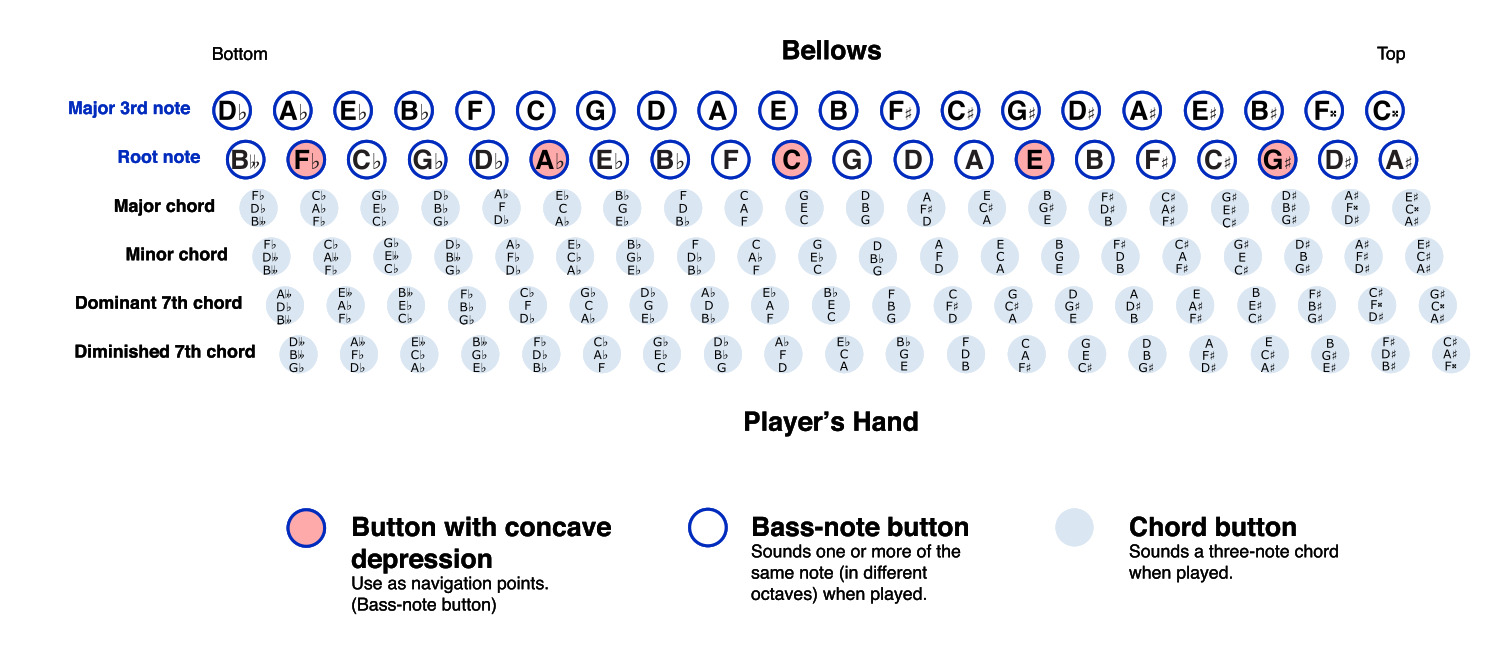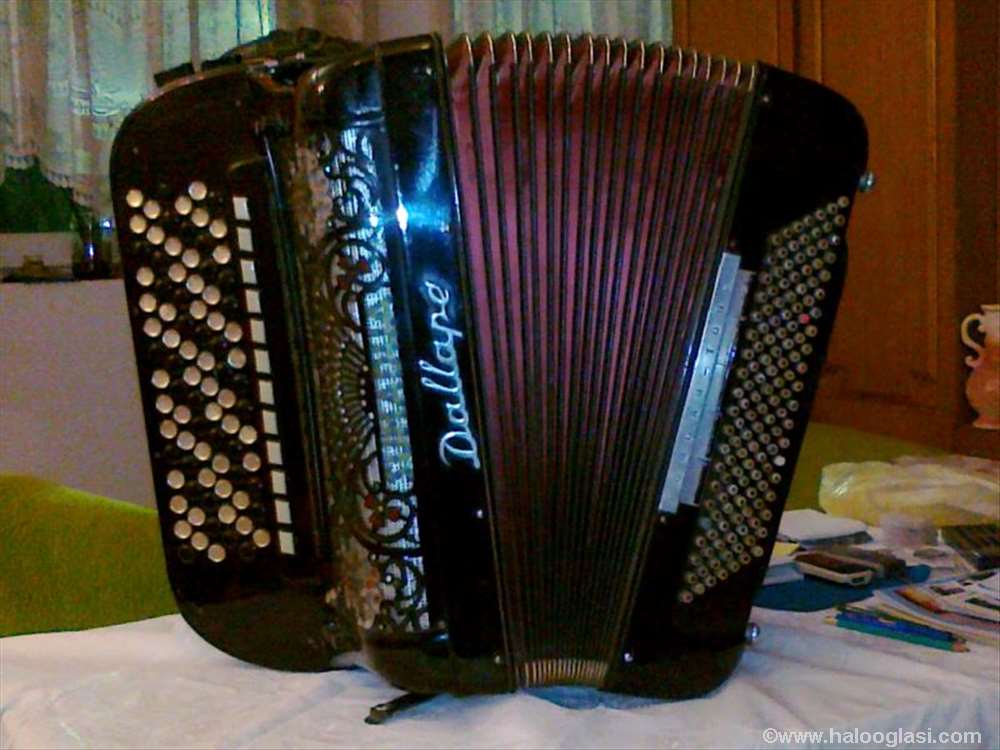Stradella Bass

Above image from https://en.wikipedia.org/wiki/Stradella_bass_system
Welcome to my little set of accordion help files. Probably the greatest feature on most modern accordions is the wonderful Stradella bass system ... the one on the left side of the instrument with all the little buttons. It looks very confusing, but with a bit of study, patience and practice you'll soon come to appreciate it's brilliance and simplicity!
Today, most “standard” accordions come with 120 bass buttons arranged like the layout at the top of this page. There are variations with more and fewer buttons ... usually the accordions with more buttons will have an additional row with more single notes or a row with an additional chord type; fewer buttons reduce the number of columns and/or the number of rows. This article shows a comprehensive listing of common 8 to 120 bass options: https://accordionchords.com/category/stradella-bass-layouts/. 140 bass layouts are fairly rare, but they do exist:

One feature they all share (again with rare exceptions) is that the layout is based on the circle of fifths (this one you can look up on your own!). Another “feature” is that they are all chromatic and play the same pitches when you push or pull on the bellows. Many smaller accordions are diatonic and play different tones ... none of my articles discuss these, but they are popular for some music and look like lots of fun.
Accordions come with a piano style keyboard on the right hand side or a button keyboard. There are advantages to both and the choice of which style to use depends largely on geography, culture and availability. There are notch players using either style (but it is rare to see anyone well versed in both).
While these articles discuss Stadella bass, it is important to note that some accordions come with “Free Bass” systems. There are even accordions which have a register button which can switch between the two systems. A Stadella system gives you a single octave for the left hand pitches with the added benefit of easy to play chords; the free bass system has a range of a full three (or more) octaves, but no chords. Many classical and “new music” players use free bass; most players of popular music use Stradella; and some use a converter system to switch between the two.
The beauty of the Stradella bass system is that it is based on the circle of fifths. Simply put, this means that if you press buttons in any column the note above will be a perfect fifth higher and the note below will be a perfect fourth lower. There are a number of advantages to this layout:
- When playing a chord (any chord) you can easily add variety to your playing by adding in the fifth or fourth,
- The fingering used for patterns remains the same, no matter what key you are in!
The Stradella system was developed in the late 1800s by Mariano Dallapé in Stradella, Italy. Since that time it has been refined and firmly established as an accordion standard. An interesting side note: the saxophone was developed by Adolphe Sax around the same time.
Over the years all the chords (major, minor, seventh and diminished) have been established as the standard ones to use. The seventh and diminished do not include the fifth (ie, the G is dropped in a C7 chord). This has little or no effect on the tonal quality of the chord and presents maybe options for the player.
In the following pages I present a number of options to play chords other than the standard four. More chords are possible. There are many, many more chords ... my program MMA-Musical Midi Accompaniment defines nearly 100 unique chords with over 50 alternate names. You can freely download this program along with various manuals from http://www.mellowood.ca/mma.
There are a number of internet sites with possible combinations for different chords: https://www.dannychesnut.com/Music/Accordion/AccordionHowTo/chcomb.html and http://www.accordions.com/naa/PDFs/2023ComplexBassChords-Fries.pdf are two examples.
Finally, don't worry too much if you can't play a given chord or don't know what notes are in it. You can always just hit the bass note button and be pretty safe ... If you see a Gsus13 and really have no idea, just play the G note. Odds are that the other notes are in the right hand. Plus, you are guaranteed that the left and right hand notes will not conflict!
 |
This page was last modified on 2024-08-16 |